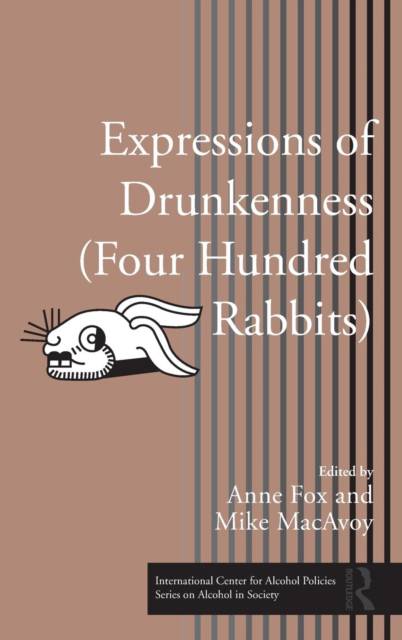
Je cadeautjes zeker op tijd in huis hebben voor de feestdagen? Kom langs in onze winkels en vind het perfecte geschenk!
- Afhalen na 1 uur in een winkel met voorraad
- Gratis thuislevering in België vanaf € 30
- Ruim aanbod met 7 miljoen producten
Je cadeautjes zeker op tijd in huis hebben voor de feestdagen? Kom langs in onze winkels en vind het perfecte geschenk!
- Afhalen na 1 uur in een winkel met voorraad
- Gratis thuislevering in België vanaf € 30
- Ruim aanbod met 7 miljoen producten
Zoeken
Expressions of Drunkenness (Four Hundred Rabbits)
€ 274,95
+ 549 punten
Omschrijving
The goal of this book is to contribute to the ongoing scholarly discussion on the very serious topic of drunkenness. The phrase "four hundred rabbits" is one of many illustrations of the deep cultural, religious, and social influences on how individuals and communities view alcohol intoxication: The Aztecs believed alcohol to have a divine origin, with a god and goddess giving birth to 400 (meaning "innumerable" in ancient Aztec) divine children or "rabbit gods," each representing a varying degree and expression of alcohol intoxication and drunkenness. Hence the book's subtitle, which at first glance might seem light-hearted but in fact represents an in-depth look at a weighty topic. With such rooted sociocultural factors in mind, the International Center for Alcohol Policies (ICAP) and DrinkWise Australia collaborated to prepare a publication that advances current understanding of the individual and collective meanings, purposes, and functions of drunkenness. As the authors explain, interpretations by different disciplines of the terms intoxication and drunkenness are often inconsistent. The chapters of this book discuss intoxication and drunkenness from three perspectives: biological, cultural, and social. By placing intoxication and drunkenness into these contexts, the book is able to offer language and conceptual tools to help advance the ongoing discussion on how best to reduce alcohol-related harm and encourage responsible enjoyment of beverage alcohol. Readers in need of an in-depth understanding of the varied dimensions of extreme drunkenness will add this excellent resource to their personal library.
Specificaties
Betrokkenen
- Uitgeverij:
Inhoud
- Aantal bladzijden:
- 208
- Taal:
- Engels
- Reeks:
Eigenschappen
- Productcode (EAN):
- 9780415992138
- Verschijningsdatum:
- 11/08/2010
- Uitvoering:
- Hardcover
- Formaat:
- Ongenaaid / garenloos gebonden
- Afmetingen:
- 155 mm x 236 mm
- Gewicht:
- 544 g

Alleen bij Standaard Boekhandel
+ 549 punten op je klantenkaart van Standaard Boekhandel
Beoordelingen
We publiceren alleen reviews die voldoen aan de voorwaarden voor reviews. Bekijk onze voorwaarden voor reviews.








